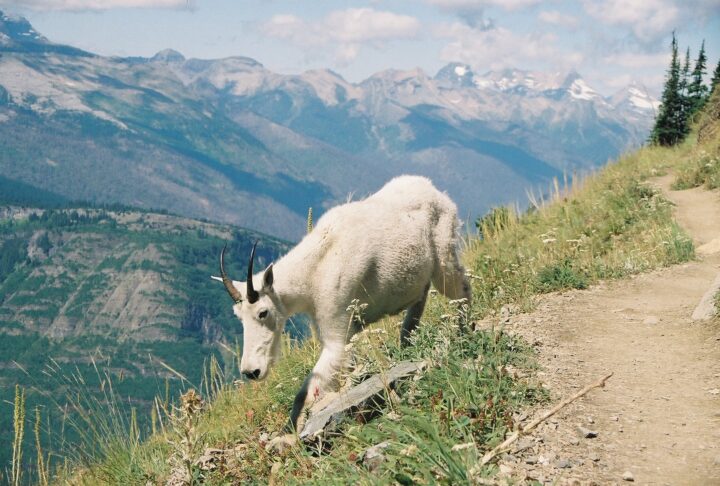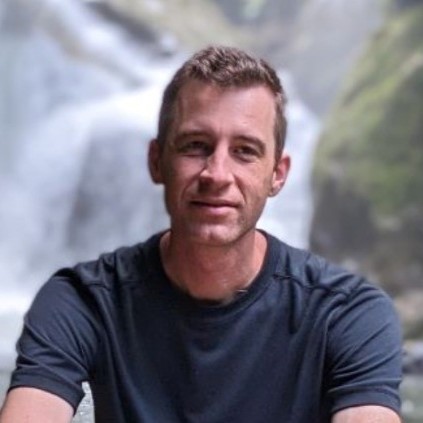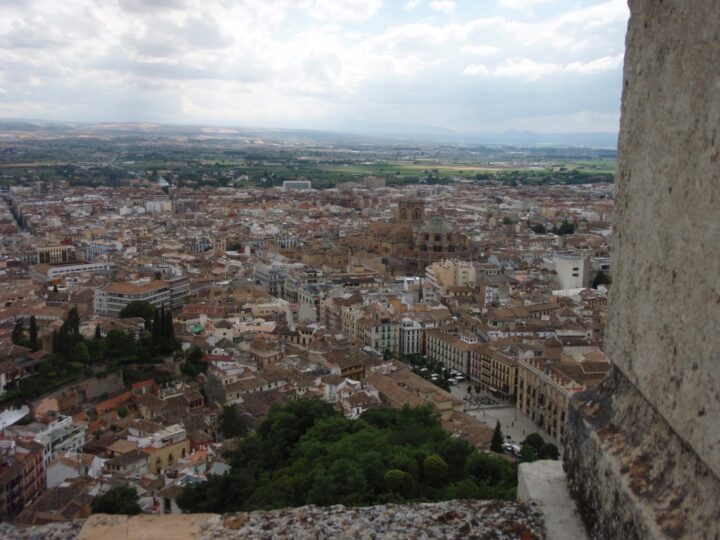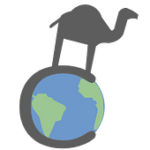The Slow Camino Philosophy: A Blog, A Way of Life

Slowing down is critical to being present in the moment and truly relaxing. But will we carry our hurry wherever we go? This post shares our Slow Camino philosophy: enjoying each step on our life’s camino.
Originally Published on June 15, 2021. Last Updated March 22, 2023
Confession: Choosing a Name
Why did we choose Slow Camino as the name of our blog? In reality, the name was born out of convenience and luck. So this is my confession: I’m solving the problem backward. We devised the name, now what does it mean?
Picking a domain name is hard. It’s not just that I’m bad at devising names for things—naming a website is especially vexing. Some of our early brainstorms included “nomadicfamily.com”, taken; “offthebeatenpath.com”, taken; “travelingslow.com”, taken; and so it went.
A domain name should be short, memorable, easy to say and spell, and jive with your brand. Most critically, it must not be used by any of the other 1.7 billion websites already in existence. That’s a tough nut to crack.
To make matters worse, there is a whole industry of “domainers” that buy up domain names on speculation, further limiting the pool.
In other words, good luck coming up with a winner that isn’t already taken. However, I did find this one hack. When I tried mixing English and Spanish words, almost anything I came up with was available! Hooray, Spanglish!
Thus, we quickly settled on the alliterative slowcamino.com.
The Slow in “Slow Camino”
For me, Slow Camino conjures the image of a scenic drive on a serpentine mountain road. Where the kids are, for one rare moment, satisfied to gaze out the window. The adults are deliciously relaxed while enjoying the view in silent contemplation. Everyone is content to be alive and together.
For us, that is travel at its best. Likely, you have your own slow travel imagery. Maybe it involves a beach, or a rainforest, or a converted van.
But it takes work to get there. And all the planning, thinking, saving, and child-minding to pull off a vacation, not to mention long-term travel, presents a contradiction. We work harder and sacrifice now in the hopes that we can relax later.
It brings to mind other contradictions: we save time driving so we have more time. To take walks. Even now as I write, I am conflicted about “wasting” time riding our bikes to church as a family on this perfect, sunny morning because of how it will cut into my time writing this post, whose artificially set deadline — enforced by no one but myself — is today.
Contradictions
In his book, “In Praise of Slowness: Challenging the Cult of Speed”, Carl Honoré confesses his habit of speeding through bedtime reading with his son. At the end of the average hectic day, he found it difficult to slow down. Similarly, my attraction to “slowness” is a reaction against my tendency towards the opposite. My whole career was carved out of making things more efficient.
My desire to travel is in many ways an attempt to push the reset button on our family life. But lately I’ve wondered if the daily sprint is something I can run from. Or, is it a set of habits I’ll carry with me wherever I go?
Sometimes I ask myself the simple question, “why don’t I just relax right now, this very moment?” Why don’t I spend time with my wife and kids right now?
The first answers that come to mind are: I have things I need to do. I can’t get behind. Once I get this next thing done I’ll be able to relax.
It’s a mindset that’s hard to shake. It’s an aspect of my personality I’m trying to work on before we take our family gap year.
The “slow” movement takes many forms: Slow Food, Slow Travel, Slow Cities. What makes something “slow” is a bit nebulous, and sometimes downright faddish. But at it’s core it has to do with rejecting the worst tendencies of modern culture — its success-worship, materialism, and frenetic pace. In it’s place, we can form a way of life that’s more gratifying to the human experience. Not to mention, leaving a gentler footprint on the environment.
The slow movement values enjoyment of the mundane, such as walking or making bread. It prioritizes investment in relationships over other types of investment.
And these days, many travelers are throwing away the checklists and passing over the chain hotels for a more carefree and local experience.
Slowing down doesn’t have to mean that you stop having goals or ambitions. Rather, it opens up space to reflect and ensure that those goals and ambitions are meaningful, properly balanced, and not running roughshod over your health and relationships.
Rather than choose the future over the present, you balance them. That way you are not losing out on either. You make the most of each step on life’s camino.
Camino
Camino means “road” or “way” in Spanish. It can also have religious connotations. The Camino de Santiago is associated with pilgrimage. Or it can simply be the “way” a person should live, the “road” a person must follow.
I am of mixed European descent and my wife’s family is from China. Neither I nor my wife grew up in Spanish-speaking households. Nevertheless, the language is woven into our lives.
My first long-term travel experience was in Mexico. When I returned, I joined a Spanish speaking church and ended up staying for over a decade. Eventually Liuan and the boys became part of the community.
When Liuan and I first hit it off, we conversed in Spanish with each other. Perhaps it was a subconscious litmus test.
We have three boys who are being raised trilingual (English, Chinese and Spanish), and our oldest is enrolled in a Spanish/English dual language program.
In the lexicon of Spanish words that American English speakers might recognize, camino has a solid footing—even if it is less familiar than words like señora or amigo. Unfortunately, the Chinese word for road, 路 (Lu) has no currency among English speakers. Regardless, the bilingual name fits the characteristics of our family (and the way we often blend languages).
Camino is also a nod towards our most ambitious travel adventure to date. In July of 2022 we left our Chicago suburb, rode an Amtrak train out to Los Angeles, then took a one-way flight to Rio de Janeiro, Brazil (in Portuguese it’s caminho, by the way). We are traveling slow through South America, avoiding flights, and traveling by camino whenever possible.
What You Can Expect from this Blog
This blog was originally a way for me to set aside regular time to reflect on our family life and our shared adventures past, present and future. Liuan immediately jumped in and wrote a response after my first post, and so it became a joint project.
This is a travel blog, first and foremost, since our travel experiences provide the clearest landmarks of our family’s life journey.
You can expect stories, tips, and reflections. A few other notes about this blog:
- You decide what is helpful for you. We do not presume to know what is best for everybody. We share our thoughts and experiences in the hope that someone can make use of them. If not, hopefully you at least found it an enjoyable read. No judgment from us if you see things differently.
- This blog doesn’t make money. For now I have no need to make money from this blog, so why ruin it with obnoxious ads? We also have no sponsored content. No stays at luxurious resorts in return for publicity. We have been enriched and inspired by reading other families’ travel blogs, and we hope to pay it forward with our writing.
- All photography is our own. No stock imagery here. Everything you see was recorded by one of our smartphone cameras. (Except in a handful of cases where I had to fudge because we forgot to take a picture. Whoops!)
- We welcome your comments. Part of why we do this is to connect with other individuals and families. So don’t be shy, tell us what you think. Let us know if we helped you in some way. Inform us (respectfully) on ways we can improve. And who knows, maybe we’ll meet someday in a foreign land.






